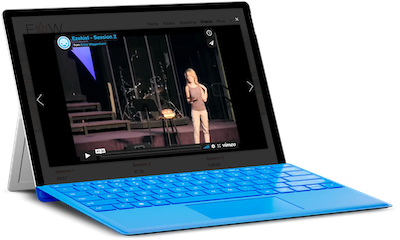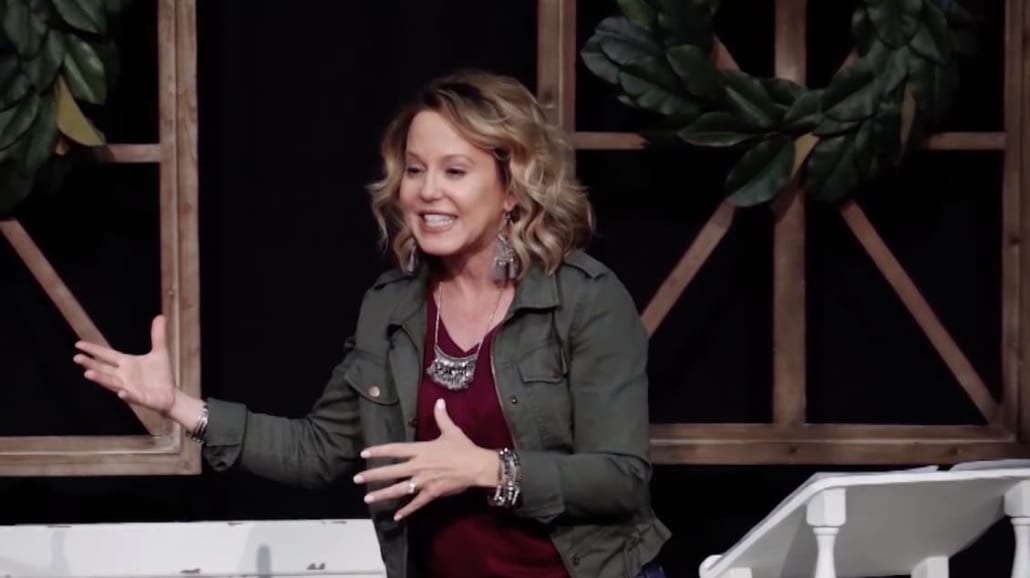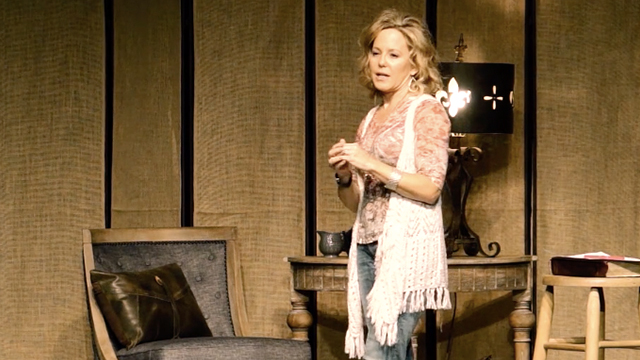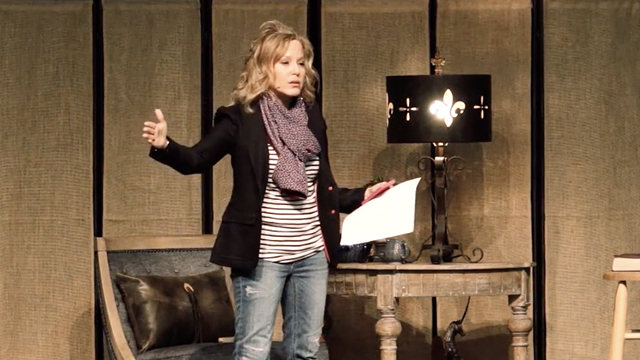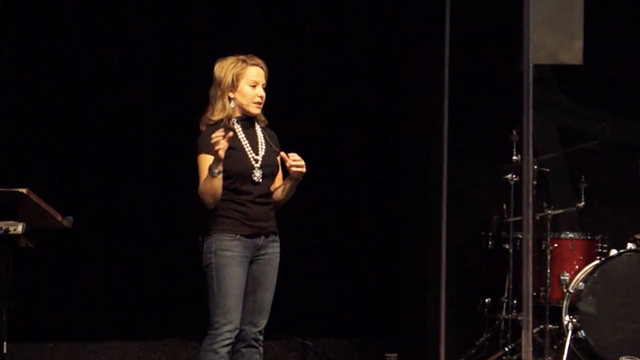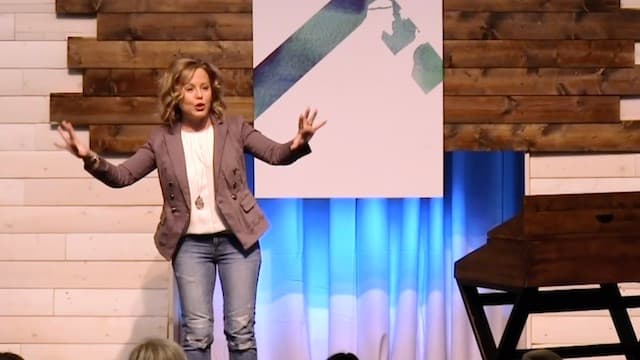I recently came across a startling statistic: People search “How to make friends as an adult” over 8,000 times per day on Google. It doesn’t take long to look around and realize there are many lonely women in desperate need of meaningful connections.
Relationships provide deep meaning for us. Our relationship with Christ, our families, and our friends hold great significance. In a fast-paced digital world where we can have 5,000 friends on a social media platform yet feel invisible within our community, the church provides a place for women to be seen, heard, and loved.
You may have a strong desire to bring women together, but you wonder how to cultivate community. How do you convince them it is necessary or help them overcome their social anxieties? We will cover specific strategies and ideas in this article.
Another catalyst that may compel you to start a women’s ministry includes spiritual growth or biblical literacy among women. Barna released a study on Gen Z. This study revealed that less than 4% of adults ranging in age from 23 to 26, hold a biblical worldview. This group sees and understands the world fundamentally differently from what the Bible teaches about God and humanity. The need for solid biblical teaching along with learning how to be a disciple of Jesus is staggering.
With thousands of podcasts, books, and biblical resources, how do you guide women toward wise choices that will actually teach them biblical principles? How do you equip them with what they need to effectively read, understand, and apply ancient scripture to their modern-day circumstances and problems? What do we need to provide for them so they can discern biblical truth from cultural lies?
We will give you a list of trusted resources and voices so you have a women’s toolbox to get you well on your way to starting a ministry for women.
You may be encountering greater numbers of women who once regularly engaged in a church community but have chosen to step away. They found the teaching irrelevant to their daily life, or the pastoral staff could not provide the help they sought. When pastors are predominantly men, they don’t always know how to counsel and connect with issues specifically related to women. They can be uncomfortable counseling and discipling women regarding deeply personal issues.
A woman may feel uncomfortable asking a male pastor questions about abortion, providing details about her husband’s pornography addiction, or her own feelings of isolation or loneliness in her family. These topics remain taboo in most churches, so she seeks outside sources for help.
You sense God calling you to bring a safe place filled with biblical truth back inside the church walls. We will discuss event ideas, women’s ministry activities, and the tools needed to work through cultural issues to provide healing.
Whatever your reason for starting a women’s ministry, the excitement can easily be eclipsed by fear.
- How do we communicate this need to a predominantly male pastoral staff without appearing condescending or disrespectful?
- What if they don’t support our endeavors?
- How will we formulate a budget?
- Where will we meet?
- What activity or event should we start with?
- What do we even call this new ministry?
- How do we spread the word and invite women?
- What if women don’t come?
Often the questions start to crush our enthusiasm and we quit before we ever move past the idea. This article will walk you step-by-step through how to start, build a team, oodles of ideas to get going, and a solid checklist to keep you focused on your original mission for starting a women’s ministry.
When women’s lives are changed, relationships restored, and women have a place to belong and to grow, the hard season of ‘starting’ will soon be forgotten. Confidence crushes fear. The joy of transformation will make it all worth it. Anything worthwhile presents obstacles. The vision may seem mountainous, but Jesus said, “Nothing will be impossible for you,” The experience of being used by God to change someone else’s life is the pinnacle of earthly joy.
The Need for Starting A Women’s Ministry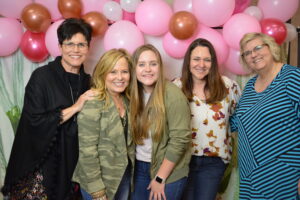
I remember my very first women’s ministry Bible study. My friend made me come, and to say I went reluctantly would be a dramatic understatement. My husband and I were in the throes of infertility, and if I had to listen to one more pregnancy woe, delivery nightmare, or child bragging fest, I just might burn the church down. Dramatic, I know. But women in pain feel things deeply, and I was in a dark place.
The reality is that over 75% of women in your church are in a dark place. The statistics about our society are staggering. Nearly one in five teens regularly use drugs. Over half of American marriages end in divorce. Eight out of ten teens cite anxiety as a daily or almost daily struggle. More than one-third of Americans worry about how to cover their family’s daily expenses. Over one in four American women have gone through an abortion. Women walk through daily worry and heartache.
People in our churches are hurting. Deeply. And historically, the church has held to the idea that you come inside the walls to worship and get right spiritually. It lets you figure out the rest of your life on your own.
But women know and understand the power of connectivity. Having other women who know their struggles and will offer love and support through them becomes the thin line of difference between standing strong in faith and stepping out of faith. When women feel isolated in their churches, they seek alternative places of refuge, often never returning to the church community.
That first Bible study set my life on an entirely new trajectory. It unlocked the door for me to read and study my Bible. It opened the window to my hurt so that instead of stuffing it, I could release it while surrounded by other women who wanted to help me heal and grow. It led to lifelong friendships that still speak into my life today, anchoring my faith across thousands of miles and endlessly changing circumstances. People who implore me to keep the faith, who pray for me, and who remind me that God is good when everything in my current season seems bad.
Women’s ministry provides tools to help women have more meaningful relationships with other women, with their spouses, their children, their extended family, and friends.
When women learn how to connect with God, all their human connections become stronger and more solidified. When women are connected and have a place to belong, they feel safe. When we feel safe, we become willing to take bigger risks, try new endeavors and explore new things. We become more generous with our love; in doing so our homes, workplaces, and communities become transformed.
Whether you want to start a general women’s ministry for your church or community, or a specific ministry to women who have a certain need, the principles apply. Psychologists have recently cited that the number one vehicle for healing from trauma involves being part of a safe community. This is the crux of women’s ministry.
When we come together as women who follow Jesus, He transforms us in the process, making us more like Him. As we are changed from “glory to glory” as the Scriptures tell us, we can increasingly exhibit the fruit of the Spirit: love, joy, peace, patience, kindness, goodness, gentleness and self-control. (Galatians 5:22-23).
But this involves centering our women’s ministry around the Person and work of Jesus and the teaching of His Word, the Bible. I have seen addicts set free, families reunited, women lead their entire families to Christ, and former criminals become college graduates and counsel other women in crisis; the stories are endless of what Christ does in the lives of His women.
The lasting change and the replication of that ministry into other women’s lives comes most often through women’s ministry.
 Obstacles to Starting A Women’s Ministry
Obstacles to Starting A Women’s Ministry
Everything meaningful always faces obstacles. Starting a women’s ministry will be hard. Taking over one initiated by someone else can be even more challenging. When it’s a battle, it most likely will be beautiful.
It will be difficult to initially get women to have a strong buy-in for women’s ministry if you present it in a generic sense. Getting them to commit their time to something is the most costly thing we ask of most women. So there has to be a felt need you are addressing that will make it worthwhile for them to show up.
The wording of the invite or the initial proposed activity may feel “less than spiritual.” We want women to come because we have a strong desire for them to grow spiritually, but we have to make peace with the reality that most women don’t understand what it means to grow spiritually and might not want to at this point. Also, they have so many practical problems they are trying to solve that spiritual growth almost feels like a luxury rather than essential. We must begin with overcoming their obstacles to being part of a women’s ministry.
Time is the biggest obstacle. And weariness and exhaustion are other ones. What is a practical way your ministry provides restoration and renewal to worn-out women? By providing a place for them to build relationships.
Don’t over-program your event so much that women do not have an opportunity to connect in a fun, relaxing way. We need to move away from the idea of always needing to teach them something and include a safe space for them to teach each other as they share their lives and struggles in authentic ways. We also need to move away from over-scripting the connection time. Most women will not find it difficult to keep a conversation going once you get it started. But forcing them to only discuss certain prescribed things without ever allowing the conversation to flow freely will ultimately stifle rather than enable relationships to form.
Women can gather information on Google, but they can’t find meaningful face-to-face connections through phone screens. Provide a place where they can come and relax, find commonalities and make connections with others, and enjoy human interaction without young children in tow or something to prepare before they arrive.
Because women guard their time so vigilantly, you will need a plan. Have a specific start and end time. Don’t start late and don’t go over. Doing otherwise communicates to women that you do not value them or the obligations in their lives.
Intentionally create your event to allow women to continue to gather once the event has ended, but provide a clear exit plan for those who need to leave at the prescribed ending time. If your primary goal is making connections, schedule extra time at the beginning and end of your event. Don’t promote an event about connection and spend the first two hours with someone talking from a platform or playing a video. Make sure you have truth in advertising.
However you promote your event, you need to plan it to match. Once you have a plan for the women’s ministry launch or event, next you need a place.
That leads to the obstacle of space. If your church doesn’t have a place for you to gather, your local community center, coffee shop, or restaurant are good alternatives. If the weather permits, even setting up tables and chairs outside on your church lawn could be a good option.
Women love to be in each others’ homes but for an initial gathering, neutral ground is better, unless women can go online and see who else has signed up to attend the event in a home. No one wants to be the only one showing up on a stranger’s doorstep.
Some great people to connect with to find homes and community centers in your local area are real estate agents. They show people homes and visit communities every day and may already have connections with people in your surrounding area who may be willing to host or donate their community center for your gatherings.
You also will need a budget. Having a spreadsheet whiz on your team will be helpful to calculate the overall cost to launch or host an event. If you are launching, you don’t want to skimp on creating the vibe and culture of the ministry you have envisioned. Make the gathering place welcoming.
Allow the women to feel like you have intentionally prepared this place for them. You don’t need to go over the top, but you need to look prepared. Have places for them to gather and sit. Provide comfortable seating. Make it inviting.
Military ministry notoriously lacks funds. Officers’ wives will often collectively donate their own funds creating a budget for their post to host something for their women. When I travel to military bases to connect with women, 9 times out of 10 the stage or table decor comes from someone’s home and gets brought to the venue.
If you have some DIY specialists who love to craft, ask them if they might be willing to create something for you. You can ask for donations or sell tickets. But if you ask women to pay, you may come across another obstacle: promotion.
Your church leadership may be uncomfortable with you charging women to come. They may also be uncomfortable giving you money to launch a ministry or put on an event. You can feel caught in the middle. Some ideas could include hosting a bake sale on Sundays to help fund the ministry, asking a photographer to donate photo sessions, assembling raffle items, a spring cleaning sale, or simply asking for monetary donations.
Even without money involved, your pastoral staff may be reluctant to help promote your event. They may worry that if they promote this area of ministry, they will have droves of people coming out of the woodwork asking them to promote their ministries as well.
But with a plan, promotion becomes possible. Hand-select ten women at your church to invite another ten women they know. You have now invited one hundred women to your women’s ministry event without spending a single penny and only using your cell phones. Communicate the clear value proposition of their attendance. Examples could include:
- Take the night off from cooking
- Meet five new women with whom you have something in common
- Get outside the four walls of your house and spend some time in the sunshine
- Let dad change the diapers while you get pampered
- Experience adult conversation without interruption
- Provide your input on what you need in this season of life
- Discover you’re not alone in your parenting struggles.
These clear value proposition statements give women a specific reason for relinquishing their valuable time to be part of women’s ministry. Of course, you’ve got to deliver on what you promise, and this goes back to having a clear plan. If your launch or event delivers and women make connections while there, chances are they will come back.
Your launch will make or break you. You must structure your event around the value proposition you have communicated. If you do this, future attendance will be a much easier sell, because you will have already shown them that women’s ministry is the place where they will find the one thing they crave most: connection.
Initial Steps for Starting Your Ministry 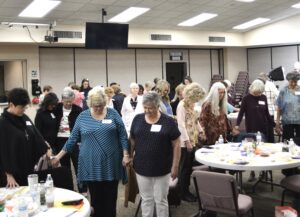
Getting started is half the battle. I love to dream, but when it comes to the doing part I often get stuck. Maybe you can relate?
You have one thousand ideas and a big vision or maybe simply a burning heart, but trying to put it into action feels overwhelming.
Let’s walk step-by-step through starting and setting up a women’s ministry plan. Maybe you’ve stepped into an already existing ministry, but you sense God calling you to give your women some new tools, you want to adjust your women’s ministry toolkit and do some repairing and restoring of the original vision.
Wherever you are on your women’s ministry journey, these five steps will get you going again.
1. Women’s Ministry Mission
Determining your mission is foundational to any women’s ministry. We can generate ten thousand women’s ministry ideas, but unless they align with your overall mission, chances are they may be fun but they won’t result in any dramatic impact on women’s lives. And again, you must make good on the value proposition you pose to your women should they agree to give you their time.
If you are starting a women’s ministry under the auspices of a church, your mission should align with its overall mission. You don’t want the church to be passionate about a particular direction, and then you take the women and run the opposite way.
Is your women’s ministry primarily evangelistic? Is your desire to create entry point events and activities to bring women from the community into the doors of the church? Or is your ministry more discipleship focused, and you long to gather your women to help them grow spiritually? Maybe you long to create a ministry to meet a specific need, such as guidance in parenting their children or walking with women through grief.
If you are part of a church, you may feel that your church already provides a plethora of spiritual growth opportunities, and you want your women’s ministry to be more community-oriented, a place for women to gather and find friendships. Maybe you long for your women’s ministry to be all those things!
However, when you start from scratch, you need to focus on one or maybe two areas first. You can always expand and develop over time, but when you are at the beginning, figure out what your primary aim is going to be.
In deciding your focus, a good place to start is to ask yourself two questions.
- What are the needs of the women around me that God keeps showing me? Is it a lack of biblical knowledge, loneliness, exhaustion, inability to prioritize, grappling with grief, fear in parenting, marriage issues, etc.? Which particular needs of women does God continue to present before you that He is nudging you to act on?
- What is something I am personally passionate about seeing happen in the lives of women? Do you long to see them reading and understanding Scripture, making meaningful relationships, finding freedom from addiction, recapturing the joy in parenting, and finding life after loss? What makes your heart beat with excitement over the thought of women experiencing engagement with women’s ministry?
There could be a thousand more examples or areas, but these are just a few to give you an idea of some possibilities. Once you have answered these questions, God will narrow your primary mission in starting a women’s ministry. Your mission should include a specific structure that defines who you are reaching and how their engagement in women’s ministry will impact their lives. For example,
We exist to ____________________________ so that women can ________________________.
Your “so that” is your why. It is the outcome in women’s lives. In my latest Ignite Influence course, one cohort group developed this mission statement for their women’s ministry:
“Manna in the Desert is a non-profit organization dedicated to assisting unhoused women in the Phoenix, AZ Metroplex by serving as a resource epicenter so that she can rebuild her life by experiencing wholeness and healing through coaching and counseling, gain access to practical resources, and develop a personal relationship with Jesus Christ.”
In the above example, their ministry focuses on women who lack housing, need counseling and practical help to rebuild their lives. Maybe you feel called to a broader population of women or to serve all ages of women in your church or community. Your heart beats for women to engage with God and with others. Your mission statement might sound like this:
“We exist to create space for women to connect with God and with one another, growing in knowledge and relationships so that Jesus Christ holds the greatest influence in her life.”
Your audience is generic, but all of the activities you choose involve helping women grow in their knowledge of God and their relationships. It means your women’s ministry will have more of a discipleship focus. It makes evangelism in your ministry take more of a backseat. But if your church is diligently focused on outreach, you may long to provide this supplemental aspect of ministering to women’s needs.
If your church is already heavily discipleship-focused with myriads of Sunday School classes and small groups, you may feel called to mobilize your women to step outside the church walls, engage regularly with the community, and provide events for them to invite their friends and family members who lack connection to a local church.
We cannot define the success of a ministry without establishing the mission. When we follow the mission God gave us, we are already successful. He will establish it.
But the mission also guards us against drift and taking on every good idea presented. It also guides us in building our team because everyone needs to agree on the primary mission and focus of the ministry. The mission becomes the glue that binds us together as we plan women’s ministry activities, ideas, schedules, events, etc.
When we focus on the mission, the measure of success becomes, “Did we stick to our mission?” rather than how many people showed up, got baptized, or rated us highly on a survey.
Contrarily, if we continue to pursue our mission and never see God blessing our obedience, we may want to gather as a team and commit to an extended time of prayer, asking God if He is calling us to shift our mission in some way.
Another thing that will often stifle the success of a women’s ministry is ego. Too often, we become overly tied to our role as a women’s ministry leader instead of letting go and allowing God to raise leaders in His way and time.
When things begin to grow stale, it may signal time for a shift in leadership. That doesn’t mean the existing leader stops leading. She may just need to take a different role and pursue an aspect of women’s ministry of which she is particularly passionate, allowing someone else to cast a vision for the overall mission of women’s ministry.
While living back east, our women’s ministry director passed the baton to a successor. However, she did not step entirely out of women’s ministry. Instead, she started leading marriage retreats and mentoring sessions with her husband. Establishing thriving marriages had always been a particular passion of hers, but overseeing women’s ministry as a whole did not allow her to develop this aspect of ministry to women to its fullest capacity.
Succession ought to create expansion. So, while God may call you to start a women’s ministry, hold that role loosely. Once it is up and running, He may place you in a particular area you feel uniquely called to minister.
Another aspect of creating your mission involves research. In the example above, Sheila noticed more women in their women’s ministry whose marriages blew up, ending in divorce. As she watched this over time, she could not continue to ignore God’s nudges to do something about it.
What are you noticing? Research these observations. Google statistics. Seek out the existence of similar ministries in your area or other places nationally. This information will help guide you in creating your women’s ministry.
Does an identical ministry already exist right down the street? Connect with them. Maybe you can outsource this particular need of your women elsewhere and broaden your mission. Or get involved in that ministry for a while. learning and growing in preparation to start your own women’s ministry in the future.
Contrarily, you may find the statistics overwhelming and the needs so great you simply cannot ignore them. God will use the information to confirm His call upon your life to start a women’s ministry. Start crafting your mission and finding your team.
2. Establishing Women’s Ministry Leaders
Scripture provides multiple examples of the power of a pair. You cannot start or refine any women’s ministry alone. You will need at least one person to help you, probably more.
Your mission will help determine your organizational structure and how many leaders you need to execute it. If you host quarterly events, you will need several volunteers to prepare and coordinate your event. A good starting place would be to plan your activity and then delegate the various tasks to pairs of people.
- Who will run registration/check-in?
- Who will decorate?
- Who will be in charge of icebreakers/games?
- Who will emcee?
- Who will be in charge of food or refreshments?
As the women’s ministry leader, you don’t want to run around trying to do all the things. You want to be available to connect with the women.
Every task is delegated so you are merely there to oversee and answer questions. The more people you have involved, the greater attendance you will have at your event.
If your mission is more discipleship focused, you will need leaders to teach, coach, mentor, and facilitate. Every leader ought to also have a “leader in training.” It is someone younger or newer to the faith in whom the leader sees significant potential. If you have three table leaders for a Bible study, you need three table leaders in training. If one of your leaders is absent, you already have a built-in substitute.
Again, you will need people checking people in, setting up, creating decor, managing refreshments, providing worship, and running slides or videos. The more you delegate and get others involved, the greater your attendance will be.
Challenge every leader to find their leader-in-training and invite someone to join them. Model the power of the ‘pair’ to your leaders.
When our ministry expanded with the creation of our Ignite Influence Course, we compiled this list of team members for our everything to run smoothly:
- Teachers
- Cohort Leaders + cohort leaders in training
- Admin for email responses, payment processing and materials prep
- Security Team- volunteers to escort women to and from the parking lot and remain present in case of any emergencies
- Prayer Coordinator who sent out weekly prayer requests to attendees and behind the scenes prayer team
- Hospitality Coordinator to prepare our place where we gathered
- Celebration Dinner Coordinator who handled a team to coordinate the meal, decor and food service and cleanup
Try and think through as many tasks as possible that you can delegate. This will unload excessive work as well as allow you to expand your leadership team.
3. Scheduling Your Women’s Ministry Gatherings
Again, your mission will drive this decision. Your mission helps define your projected participants for your women’s ministry and their unique needs and obstacles to gather.

Do most of your women work outside the home?
Are they single moms who will require childcare?
Can they drive at night
Your mission helps define your projected participants for your women’s ministry and their unique needs and obstacles to gather.
Not only will that determine the time, but it will also steer location possibilities. If you need childcare, you will have to plan space for that. If you have women in recovery meeting at a restaurant with a large bar probably is not a good idea. Hosting your retreat with minibars in the hotel rooms will prove to be a temptation.
Once you have established your mission, ask your women questions to help determine the best time and places to meet. Women with school-age children will be juggling after-school activities or sports commitments. They may homeschool during the day.
There are many factors to consider, and it will be impossible to accommodate everyone. But taking the time to connect begins to build trust among your women, and shows you deeply desire to serve them. It also shows that you long to understand their needs and the reality of their daily lives and commitments.
Posturing yourself this way as a humble leader makes you approachable and caring. These two perceptions go a long way in building trust, causing women to take a step toward engaging in any ministry opportunity you offer.
Choosing A Theme for Your Women’s Ministry
Once you have a mission and a plan, you will also need a theme. The mission is evergreen, meaning it does not shift from year to year, but your theme may be tied to a one-year plan, a semester, or an individual event. The theme ought to involve an aspiration or a promise to the women who will be part of the ministry.
The theme can be a Scripture that includes a promise or a daily principle for living. For instance, Psalm 46:10: Be Still and know that I am God. Your theme is stillness or trust, and your aspiration or promise is that through the events and activities throughout the year or at this particular retreat or event, women will learn to be still and trust God to a greater degree. Some good questions to ask might be:
- What is something specific God longs to accomplish in the lives of our women this year? Rather than a more generalized “spiritual growth” or “biblical literacy,” determine a specific area of obedience, such as learning to be still and trust Him as in the example above.
- What is a particular area of struggle that our women seem to consistently wrestle with?
In the above example, maybe it’s that your women always seem to be exhausted. Or they wear busyness like a badge of honor instead of seeing their disobedience in crowding God out of their lives. Maybe it’s learning how to pray or finding a place to serve.
Once you land on a theme, you can move to some specifics.
Choosing Your Ministry Name and Logo
If your theme is Still, your logo and branding should reflect something peaceful and calm. Probably not a bright red flame, but something blue or green and steadfast. Maybe a tree or a lake scene with mountains.
Chances are someone you know loves Pinterest or photography. Have them research colors, symbols, and items that reflect the theme. If your theme is Ignite, then the bright red flame fits.
Your women’s ministry theme fulfills your mission but specifies it for a designated amount of time. The overall women’s ministry logo should reflect your mission and be more generic. Your theme is transitional and specific.
When choosing the name of your ministry, it will be helpful to tie it locationally to something, especially if you decide to include an outreach component. Have the name of your church, city, or state in the name of your social media handles.
Let’s say you go very generic. You are starting a women’s ministry for your church. You attend Compass Church in Plant City, Arkansas. Your name is simply Compass Women of Plant City. Your social media handles are @CompassWomeninPlantCity. This way, when people find you online or search Compass Women, they don’t accidentally confuse you with the women’s ministry of Compass Church in Juno, Alaska!
Your ministry name needs to be informational. It gives an idea of your location and whom you serve.
Choosing Your Annual Theme
Again, your theme needs to be aspirational. It includes a promise or a principle that will be gained or applied. Like a goal, it needs to be actionable and doable. Something women feel is attainable and desired.
If your women’s ministry includes women mostly over 65, you probably don’t want a theme of Still. Why? Because most of them desire to be more active, not less. But if your women’s ministry primarily includes women working, raising families, or having babies, then Still is an aspiration for them.
What would excite your women or meet a longing in their life? For busy women, Ignite might feel overwhelming. They already seem to be burning the candle at both ends. More fire doesn’t seem to be too appealing! Think and pray through this and ask what your women really need.
Imagine you decide on the theme of Still. For your retreat, purposefully include a time for them to be still. Include a time of quiet prayer journaling. Or to go for a walk or take a nap. Structure your events to match your theme.
Choose a book from the Bible or a study book that focuses on trust such as Unexplainable Jesus: Rediscovering the God You Thought You Knew. Host a night about prayer journaling. Send out a worship playlist to the women and challenge them to get outside to go for a walk while listening to it. Plan a book club on letting go of things in your life that weigh you down. Letting God Be Enough: Why Striving Keeps You Stuck and How Surrender Sets You Free is a good one for this.
Your theme will help drive your activities, decide on books, studies, icebreakers, and games, and point women toward your mission.
Choosing Your Seasonal Theme
Having a year-long theme might feel too restrictive for you. Planning per semester might seem more actionable. In Arizona where I live, we have a radically different population in our women’s ministry in the winter than in the summer.
Our size doubles with the arrival of Snow Birds, retired and semi-retired folks who come to spend the winter in Arizona. These women crave connection and continuity in their relationship with God and others.
During the spring and summer, they leave. We are mostly left with young families. So our themes shift based on our population changes.
One warning about seasonal themes: they are often deeply rooted in church tradition. “We always host a Christmas Tea.” Or a spring luncheon. Or whatever. If the aspirational promise is not being met but merely a tradition being kept, I suggest rethinking it.
Part of the beauty of choosing themes that are aspirational rather than seasonal is that it gives you a blank canvas to which you can add details to bring your women’s ministry mission to living color.
Choosing Your First Women’s Ministry Bible Study 
Some of you might be thinking, “I thought women’s ministry could just be fun and evangelistic?!” It can be, but ultimately, if you are gathering women, the Word of God must be the bedrock of continual gatherings. You may launch with something fun and lighthearted, but we must always land on the unchanging Word of God where life’s ultimate meaning and satisfaction are found. If everything is only fun and connection you’re not a ministry, you’re a club.
Your Bible study should match your theme, which is rooted in your mission. If your theme is Arise, choose studies that invite women to begin living with greater faith and boldness like An Unexplainable Life: Recovering the Awe and Wonder of the Early Church. You won’t want to choose the study Breathe when your theme is about getting up and getting busy.
If you give women one particular thing to focus on, it becomes much more attainable and the continuity points them toward a specific action. When women see how they are growing and changing due to involvement in women’s ministry, they will be more committed to it.
A word of caution: you should always preview any Bible study or book before bringing it before your women. If you do not feel confident in discerning the biblical soundness of a particular work, then ask a pastor or someone else in your church whom you trust to preview it. Being highly rated on Amazon doesn’t mean it’s in doctrinal alignment with your church.
More and more Christian publishing companies are owned and run by secular agencies. We need to do our research before encouraging women to read and listen to works that focus on biblical study and interpretation. Moody Publishers, Crossway and Lifeway are all publishers that place a heavy emphasis on sticking closely to the Word of God.
Another solid practice is to research the author’s website and examine their statement of faith. If they don’t provide one either in the footer of their website or somewhere on their ”About” page, it should be a red flag. Sharing that Statement of Faith with an elder or pastor for clarification could be a quick way to vet whether a particular author stands in alignment with your church’s teaching.
What Will Make Your Women’s Ministry Bible Study A Success?
A common issue women’s ministry leaders face in planning and hosting Bible studies includes the drop-off rate. Many women sign up, but throughout the study, attendance begins to slip. It can become discouraging.
Here are a couple of pointers to help prevent this from happening. One we already mentioned in the Women’s Ministry section above regarding recruiting leaders and volunteers. The more tasks you delegate and the more people you involve in your Bible study time, the greater your attendance will be. Ask women to be greeters, prayer warriors during one week of the session, coffee makers, set up and tear down helpers, worship leaders, tech assistants, etc. Invite several women to share their testimony throughout the study. Invite each table to take a turn to teach or demonstrate a short object lesson. Having something new each week in conjunction with the study material keeps women coming because they don’t want to miss out.
A second factor to keep in mind is the only thing women will miss if they don’t attend the study: connection. Most likely, they can access the teaching online somewhere. They already have their book. But what they don’t have is a place to belong and feel heard, seen, and known. It is something they will only receive via their attendance.
So making connection time a priority during Bible study will prove indispensable in keeping them engaged. It doesn’t mean a time when they sit at tables and the facilitator does all the talking. It means strong leaders who keep one person from dominating the table and allow for everyone to participate.
If women don’t complete their study homework outside of class, you might feel like you are failing as a Bible study leader. I would suggest that your strongest indicator of success is attendance. If they are coming and attending, their hearts are open to receiving. It is what we want most. Especially for women who are newer to Bible study, who will most likely learn more from the women around the table than they will by studying at home. They’ll get to personal study eventually, but getting them to Bible study will be the fastest way they will grow in their faith and their desire to study on their own.
If you find that most women struggle to complete the study materials, consider choosing studies with less individualized work or encourage them to follow the Bible reading plan for the week. You don’t start training for a marathon by running twenty miles on day one. You start with a few miles and continue to add more. If you have a lot of busy women in your studies who work full time, are single mothers, homeschool their children, or have toddlers and babies at home, you may need to rethink the type of study you select so they are not consistently feeling overwhelmed. Once they get a few short studies completed, you will find God will turn their duty of daily homework into a delight!
How Many Bible Studies Should You Do Per Year?
The number and length of women’s bible studies in your women’s ministry will tie directly with both your mission and your theme. If you are focusing heavily on service, you may want to read together through a chapter book with a few discussion questions and spend the predominance of your time out in your community completing service projects. If your theme for the year is Be Still, you may again want to do a study with less daily homework and implore the women to work through a guided prayer journal. Think about your current mission and theme and what is going to best meet the direction you sense God leading you.
You may want to do a longer study in the fall, something shorter in the spring, and a book club in the summer. Or you may want to reverse it and start with a book in the fall to whet their appetite, and then beginning in January, dive into a meatier study.
I would try to do at least two books or studies per year and mix up the style, length, and author to give your women a variety of study experiences. Most Bible study authors have both study workbooks and chapter books that include discussion questions and Bible reading plans.
The primary goal of all women’s Bible studies is to teach the Word and to teach them how to study the Word on their own. Check out my blog post on How to Study the Word for a deeper explanation about this.
Booking Women’s Ministry Speakers
I recently had a pastor email me asking me to speak to the women at his church. He said, “Our women have completed several of your studies, and I want to surprise them this year by inviting you to come speak!”.
Bringing in outside speakers, especially published authors, will most likely be the costliest piece of your women’s ministry budget. Unless they are local, you will have airline expenses and an honorarium to consider. Many bestselling authors charge upwards of $10,000 to speak for one session. Lesser known authors can range anywhere from $1,000 to $3,500 for an honorarium fee for a weekend.
The primary question to ask in justifying such an expense is this: What added value will this person bring that I cannot provide through women in my own church or organization?
Bringing In A Speaker from the Outside
As my dad used to say, “An expert is anyone who comes from at least 50 miles away and carries a briefcase.” Most women’s speakers do not carry briefcases, but they will come with a presentation that your women will give more weight to simply because of who they are.
So, if you have a hard topic that you know needs to be lovingly addressed, bringing in an outside speaker will most likely result in your women receiving it with more grace. If you are hosting an outreach event, inviting a high-profile speaker to come will encourage your women to more proactively invite members of the community.
In my personal example above, you may feel compelled to just surprise the women with a special day! I will add that this pastor did ask me to cover some specific topics he felt would help his women grow in Christ.
Again, go back to your mission and your women’s ministry theme. Will this speaker be the best fit and worth the added expense? Most professional speakers include topics on their speaking page. You may quickly find that a particular speaker of interest has a talk/retreat prepared that clearly matches your yearly or semester theme.
You may wish to have a local person come to teach their entire study or book to your group and come for multiple visits. Some possible ways to make this beneficial for the author and cost-effective for your group would include:
- Purchase a copy of the author’s study book for every woman in your group and ask them to write a review for the author.
- Ask your tech team to video the author’s teaching so they can utilize the videos on their website or for other promotional purposes.
- Ask the author what would bless them and make it worth their while to invest their time ministering in this capacity.
Some authors simply desire to speak, get practice teaching, and welcome the opportunity to have a live group in front of them!
Recruit Speakers From Inside Your Church
The safest way to have people speak from inside your church is to pre-record them. It allows you to be certain they will stick to your schedule, and any parts you might not feel comfortable having them share can be edited out. You could also ask them to submit their notes to you prior so you can review them.
Inviting women to share their testimonies creates connections across your women’s ministry as they are introduced to other women with shared struggles. Inviting other staff members to speak to your women communicates to them that the male pastoral staff values women’s ministry and what is happening in it.
Some women’s ministry teams intentionally meet with women, helping them learn how to teach, and training them to regularly teach the Bible without remaining dependent on outside curriculum. If you have women on your team who can coach and train other women in hermeneutics and message delivery, it can become a powerful piece of discipleship and ministry multiplication.
At MyOnlyAim.com, my ministry partner and I host a ten-week course training women how to study and teach called Ignite Influence.
Preparing Your Speakers to Succeed
Most outside speakers have a Speaking Agreement or contract outlining their preparation for your group or organization along with any expectations they may have from you. It would be wise, as a women’s ministry leader, to keep copies of these contracts on hand as you may wish to create a modified version for anyone within your church who plans to speak. Make sure it includes items such as:
- How many times will they speak?
- How long will each session last?
- Do you want them to prepare follow-up discussion questions to go along with their presentation?
- Do you want any guided prayer prompts?
- Do you want them to prepare a short video clip promoting your course or event?
- Would you like to preview their notes before they speak, and if so, how long before the event do you need to preview them?
- Does your pastor, elder board, or CEO require any approval of the contents before they are shared with your women?
- What happens if you need to cancel or reschedule the event?
- How will travel arrangements be handled and reimbursed?
- How soon in advance do they want to know the schedule for the day?
- What type of tech support will they need, what type of audio/visual materials would you like from them, and who will format them (slides/handouts/promo materials, etc.)
- What time do you need them to arrive, and realistically, when they should expect to be finished?
Planning Your First Semester of Women’s Gatherings
Planning your women’s ministry events will be as diverse as the women who will attend. Some love crafts and others love games. Some are extroverted, others are shy. Finding the right balance of activities can be tricky! Whether it’s women’s ministry icebreakers or games, you’ll have lovers and haters every time. That’s okay. The important thing is to mix things up and take your post-event feedback seriously.
You can have icebreakers happen in a large group, in a group of three or four, or at a table. Try and provide a variety so all women have a chance to participate in a way they feel comfortable. Games should be voluntary and women who just want to watch should not be made to feel bad or pressured to participate. A simple Google search of “Youth Group Activities” often provides a lot of fun and silly ideas for games.
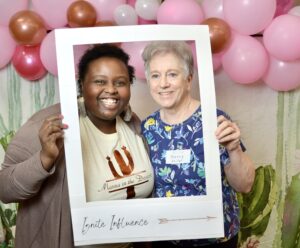
Discussion can include your icebreaker, starting with
Getting-to-know-one-another questions
Share the last photo of your family on your phone
Share a photo of the last place you visited on your phone
Don’t open a discussion with a deeply vulnerable question that will make women immediately uncomfortable. Laughter leaps over walls. So if you can get women to laugh during your icebreakers and games, you will have overcome their defenses and become allowed to access their hearts. This is the underlying purpose behind icebreakers and games, not just time fillers.
Announcements should be kept to a minimum. Don’t try and recruit women to attend future events or studies before the event at hand has even started. Save follow-up opportunities for the end or create a video for them to watch toward the end of your gathering. Follow up with them again via email inviting them to participate in your next women’s ministry theme or event.
Expectations for Your First Year of Women’s Ministry
Women’s ministry is challenging. Starting one from scratch or taking one over, setting a new tone and expectations is even more difficult. Starting with your mission and moving to your yearly or seasonal theme will help guide your steps and give you a measuring stick of accomplishment.
Did we stay true to the mission? It will be your yardstick of success. Your numbers may be smaller than you hoped. You may have women who balk at your chosen activities. You may have to shuffle some traditions and try new things, causing some people to get upset. But if you stuck to your mission, then you succeeded.
We often want to run ahead and choose study materials or plan an epic event, but if we don’t solidify the mission first, we will always miss the mark. We won’t know the “why” behind what we are doing, and we won’t have developed a proper standard for success.
If you have one thousand women at your event and no one connects, grows spiritually, or makes a commitment to continued involvement, was your event successful based solely upon attendance? Only your mission can measure success.
Most great ministries are built over time. It will be tempting to quit when you receive more negative feedback than positive, or you feel like you are pulling teeth to try and get women to attend.
But if you prayerfully follow the mission you know came from God, He will bless it over time. Oftentimes, as women’s ministry leaders, God fosters our faithfulness before He pours forth success based on our standards.
So don’t quit. Stay faithful, and God will bear fruit through your obedience!



